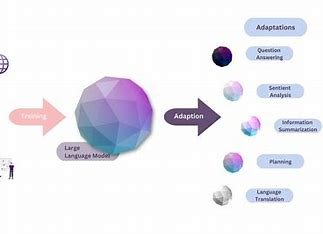Google Releases Tech to Watermark AI-Generated Text

In a significant step toward promoting transparency in the world of AI-generated content, Google has unveiled SynthID Text, a revolutionary watermarking tool aimed at helping developers and businesses easily identify text created by generative AI models. This powerful new technology is now freely available to download on platforms like Hugging Face, as well as through Google’s enhanced Responsible GenAI Toolkit.
This release highlights Google’s commitment to responsible AI development and use. Through a post on X (formerly known as Twitter), the company stated, “We’re open-sourcing our SynthID Text watermarking tool. Available freely to developers and businesses, it will help them identify their AI-generated content.”
The tool is designed to offer a new layer of transparency for AI-generated text, allowing users to distinguish between human-written and AI-created content. It embeds a subtle but detectable watermark within the text without affecting its quality or readability.
This development is particularly relevant in today’s digital landscape, where AI-generated text is becoming increasingly prevalent. By making this technology accessible to businesses and developers, Google is addressing growing concerns about misinformation, synthetic content, and the ethical implications of AI use.
How SynthID Text Works
At its core, SynthID Text works by embedding a digital watermark into AI-generated content without altering the quality or structure of the text. But how exactly does it work?
AI models generate text by predicting which “token” comes next based on a prompt. A token can be anything from a single character to a full word. For example, when asked, “What’s your favorite fruit?”, the model predicts the next likely word or token. Each token gets a score, which represents its likelihood of appearing in the final text.
What makes SynthID Text unique is that it subtly manipulates these scores to embed a watermark. This modulation doesn’t impact the text’s meaning or accuracy but creates a unique pattern that can be detected later. Whether the text is slightly cropped, paraphrased, or even modified, the watermark remains intact, allowing developers to trace the content back to AI origins.

Performance and Limitations
As advanced as SynthID Text is, Google admits that it has some limitations. While the tool works exceptionally well with longer AI-generated text, it’s less effective with shorter pieces of content. For instance, factual questions such as, “What is the capital of France?” or prompts where little variation is expected, like “recite a William Wordsworth poem,” present fewer opportunities for watermarking without compromising accuracy.
Additionally, the tool struggles with heavily rewritten or translated text. When AI-generated content is translated into another language or significantly paraphrased, the watermark becomes harder to detect. Google is aware of these challenges and continues to improve SynthID Text’s functionality over time.

The Growing Need for Watermarking in AI Content
The rise of AI-generated content has brought new challenges to the digital world. According to recent studies, 90% of online content could be AI-generated by 2026, creating risks around misinformation, propaganda, and fraud. Already, 60% of sentences on the internet may be AI-produced, largely due to the widespread use of AI translators. These numbers highlight the urgency for solutions like SynthID Text.
Governments are beginning to take action. For example, China has introduced mandatory watermarking for all AI-generated content, and California is considering similar laws. As the digital landscape continues to evolve, tools like SynthID Text could play a pivotal role in helping organizations navigate these new regulations.

Competitive Landscape and Future Outlook
Google is not alone in this effort. Competitors like OpenAI have also been developing watermarking techniques for AI-generated text. However, OpenAI has delayed the release of its watermarking tools due to technical and commercial concerns. With companies like Google and OpenAI vying for dominance in this space, it remains to be seen which solution will become the industry standard.
The benefits of watermarking AI-generated content are clear. As AI becomes more integral to content creation, distinguishing human-written text from machine-generated content will be crucial. Businesses and developers that adopt tools like SynthID Text can not only protect the authenticity of their content but also comply with emerging global regulations on AI use.
For those looking to explore Google’s SynthID Text, the tool is available for download on Hugging Face, where developers can begin using it to watermark their AI-generated text.
As AI continues to shape the future of content, watermarking solutions like SynthID Text could become essential tools for businesses, developers, and even governments. The ability to trace and verify the origin of AI-generated text could be the key to maintaining trust and accountability in an increasingly digital world.
Read more : Google Signs Nuclear Power Deal with Kairos Power














